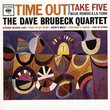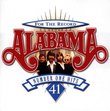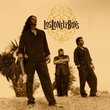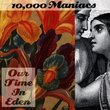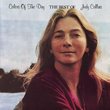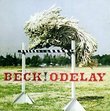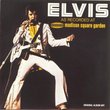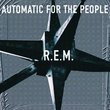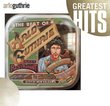| All Artists: Various Artists Title: From Spirituals to Swing Members Wishing: 3 Total Copies: 0 Label: Vanguard Records Original Release Date: 8/24/1999 Release Date: 8/24/1999 Album Type: Box set Genres: Blues, Jazz, Special Interest, Pop Styles: Delta Blues, Vocal Blues, Regional Blues, East Coast Blues, Acoustic Blues, Jump Blues, Piano Blues, Swing Jazz, Traditional Jazz & Ragtime Number of Discs: 3 SwapaCD Credits: 3 UPC: 015707016926 |
Search - Various Artists :: From Spirituals to Swing
 | Various Artists From Spirituals to Swing Genres: Blues, Jazz, Special Interest, Pop
In many ways, these 1938 and 1939 Carnegie Hall concerts ushered in an exciting period of black music for the American public. While great bandleaders like Benny Goodman had been blurring the color line for years, From Spi... more » |
Larger Image |
CD DetailsSynopsis
Amazon.com In many ways, these 1938 and 1939 Carnegie Hall concerts ushered in an exciting period of black music for the American public. While great bandleaders like Benny Goodman had been blurring the color line for years, From Spirituals to Swing was the first prominent Carnegie Hall production to present African American performers to an integrated audience. Besides the racial and political implications of John Hammond's controversial shows, the producer was able to bring together some of the era's finest talent in jazz, blues, and gospel music. Recorded straight onto lacquer discs before the advent of long-playing albums and first released in 1959, this three-CD set includes two dozen previously unreleased performances by the likes of the Count Basie Orchestra, bluesman Sonny Terry, the Golden Gate Quartet, and James P. Johnson. There are several notable moments in Hammond's Carnegie collection, previously unreleased and otherwise. Naturally, this includes swinging presentations by a Basie band that showcase star-studded soloists like Lester Young, Buck Clayton, Herschel Evans, and Harry "Sweets" Edison. There are also three dynamic performances by the Kansas City Six, which feature the rare pairing of tenor saxophonist Lester Young with early guitar great Charlie Christian. The box set also includes wonderful vocal contributions from Joe Turner, Helen Humes, and Jimmy Rushing as well as blues icon Big Bill Broonzy and gospel matriarch Sister Rosetta Tharpe. Unusual artistic combinations make these Hammond productions particularly distinctive. The live trio collaborations between boogie-woogie pianists Meade Lux Lewis, Albert Ammons, and Pete Johnson are fast-paced and terrifically exciting. The New Orleans Feetwarmers showcase the Basie rhythm section of bassist Walter Page and drummer Jo Jones alongside Sidney Bechet and piano legend James P. Johnson for some real Dixieland music. While gospel contributions from the Golden Gate Quartet and Mitchell's Christian Singers are powerfully emotive, it's the seasoned work of Benny Goodman that tops off this fascinating set of performances. With a group that included Charlie Christian, Lionel Hampton, and pianist Fletcher Henderson, Goodman presents classic compositions like "I Got Rhythm" and "Stompin' at the Savoy." With a jam session finale of "Oh, Lady Be Good," From Spirituals to Swing sums up two historic musical events that should not forgotten. --Mitch Myers Similarly Requested CDs
|
CD ReviewsFantastic rare performances of late '30s Big-band stars. ericvonk@aol.com | No. Calif. | 10/04/1999 (5 out of 5 stars) "I owned this in record form in the late 50's when it first appeared, and have been waiting for its CD version for a long time....especially since my vinyls have long since given up the ghost. What a range: from a capella gospel to Basie to Hot Lips Page, this is one tremendous and historic set of music played right before the war: hot, jumpin' jive with some of the biggest names (and some long forgotten, for shame!). It is, as I have proven, MEMORABLE music. If you like the sound of American jazz, from New York to Kansas to New Orleans, get this set! It includes many more cuts than were on the original 2-record LPs. Can't wait to put it on and feel happier each morning!" Crucial for the Basie Fan Tony Thomas | SUNNY ISLES BEACH, FL USA | 04/22/2005 (5 out of 5 stars) "To me all the gold is in the prewar Count Basie Orchestra and this is the glue that holds together these recordings. Purely from the standpoint of Basieism, this is a crucial and important record. The way that the sound has been remastered and recorded in this edition of the recordings, gives us the best real view of the Basie Orchestra on any live album I have ever heard that was cut before WWII, and better sound than some postwar live shots. Part of this is because of the superb natural acoustics of Carneige Hall. Part of this is that these concerts were recorded with actual recording equipment, while all the other live prewar Basie I know of are home wire recorder recordings of radio broadcasts. We get to hear the full extent of Joe Jones' hard drumming with the band, something that doesn't come through even on studio recorded Decca and Columbia sides during the 1930s and 1940s. Joe's reputation as little more than a time keeper playing in unison with the rhythm section will die after you here the full Basie band selections on this CD. He is constantly dropping bombs and beating the heck out of the bass drum, without spoiling the perfect swinging time, he is famous for. I really love the great solos by Lester Young on the big band pieces and am glad that we have a full version of One O'clock Jump, as most live versions of the tune are short sections of the tune that Basie used as an introduction or a sign off. A lot of the richness here is in the mixtures of Baseities and the other musicians. We hear Helen Humes singing with James P. Johnson, whom she had recorded with in the 1920s, accompanied by Basieites. Likewise, veterans of the band filling out a band for the great Sydney Bechet. The treat here is the selection of small group Basie tunes both from the Spiritual to Swing concerts and from recordings John Hammond Sr. falsely put on the previous two-lp version of Spirituals to Swing that Vanguard issued in the 1950s. The actual concerts included the Kansas City Six, a small band of Basieites and electric guitar wizard Charlie Christian. Christian, from Tulsa, had broken into Jazz in Kansas City and in his native home of Tulsa Oklahoma. He'd known the Kansas City rhythmns and some of these musicians for years. He picked up electric guitar from Eddie Durham, who played standard guitar, National steel guitar, and trombone for the Bennie Moten Orchestra, Jimmy Lunceford, and for Basie. In fact during this period, Bennie Goodman tried to discourage Christian's jamming with the guys from Basie's band, because he was afraid he would leave Goodman's band and join his old compatriots. Goodman used Christian, and other black musicians such as Lionel Hampton and Fletcher Henderson recorded in his small jazz combo which you hear on these recordings. Goodman kept his big band all white to make segregated movie and hotel engagements that would not have permitted a mixed band at the time. A less glorious legacy here are the Kansas City Five recordings. These are three studio recordings John Hammond made of members of the Basie Band led by Lester Young, probably in early 1938 when the Baseites were still under contract to Decca and not Columbia where Hammond was an A & R man. In an LP version of these concerts in the 1960s, Hammond added some of these KC 5 recordings as being part of the concerts complete with a faked introduction with his voice electronically alterted to sound young and fake applause. They are really nice smooth swinging music well recorded. Someone should have the brains to select both sets of small group Baseite recordings on these CDs, the small group Basie recordings made for Decca and Columbia, and the 1930s small group Kansas City recordings made for Commodore and put out one CD. Hmm, can't may computer make that mix? Just one note here on a completely different subject. We see the kind of paternalistic stereotyping of Black musicians, especially bluesmen, as primitives, in the introduction of Big Bill Broonzy at these concerts. Broonzy is introduced as an Arkansas farmer who had to buy his first pair of shoes to make it to Carneige Hall. Of course, Broonzy had been making blues recordings in Chicago for about 10 years before the Spirituals to Swing concerts. All the sides he cut for Bluebird's Chicago Blues straw boss Ezra Melrose, all the bar, theater, and house party gigs Broonzy had cut in Chicago must have bought a lot of shoes." All Star Concert! B. D. Tutt | London, UK. | 11/13/2001 (5 out of 5 stars) "Wonderful performances by an all star line up. I agree with the previous reviewers, but would just point out one thing. Stride piano great James P. Johnson gets a lot of exposure here, playing in the Bechet / Ladnier group, guesting with Count Basie, and playing three solos. The performances of "Carolina Shout" and "Mule Walk" are well known and much re-issued, but the performance of "Blueberry Rhyme" has never appeared before on LP or CD. It is one of Johnson's most beautiful pieces, a gentle melodic delight which is given a wonderful reading here, on a par with the 1939 studio performance and better than the 1943 version. Recommended to all jazz lovers, and to Johnson fanatics in particular!"
|

 Track Listings (19) - Disc #1
Track Listings (19) - Disc #1